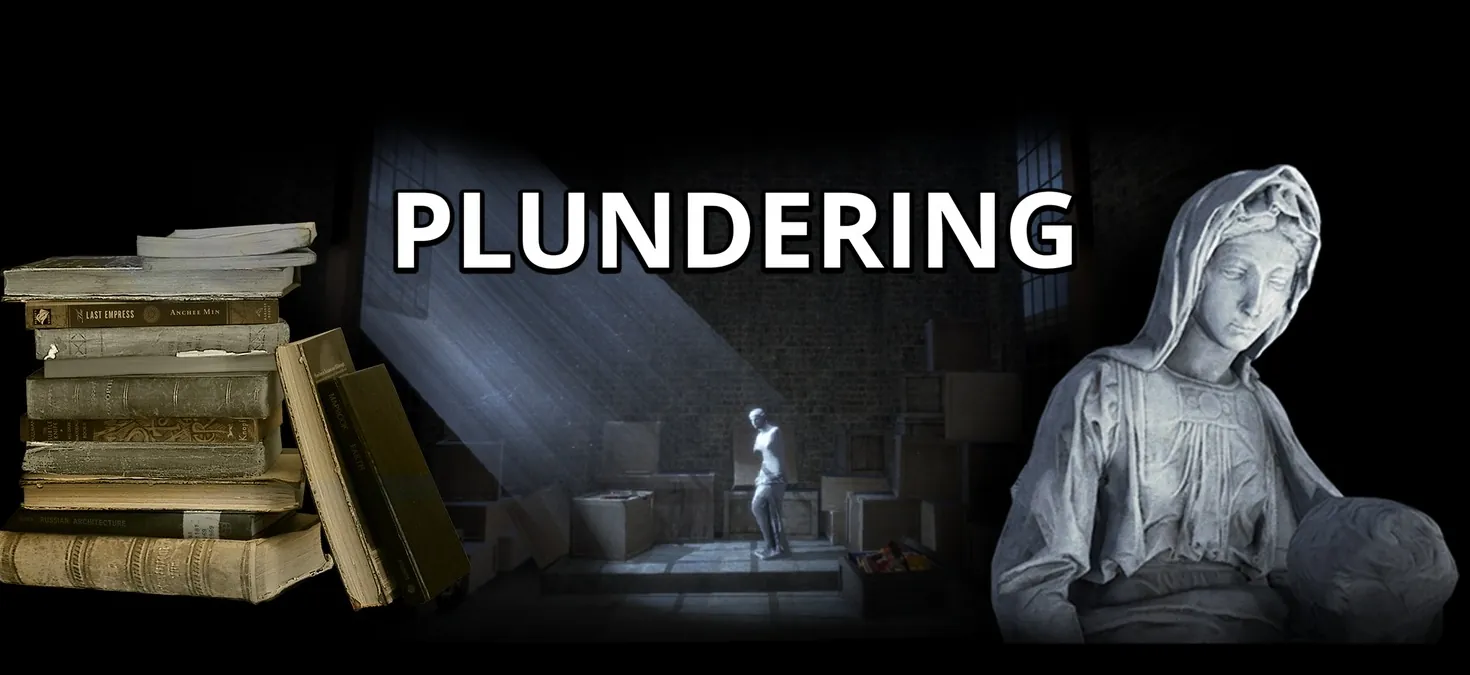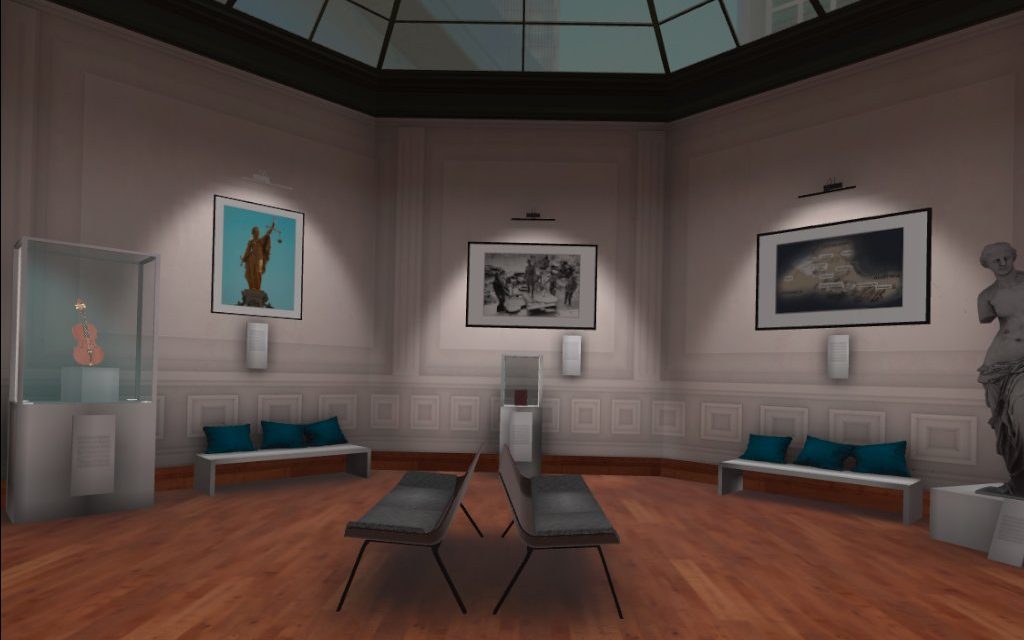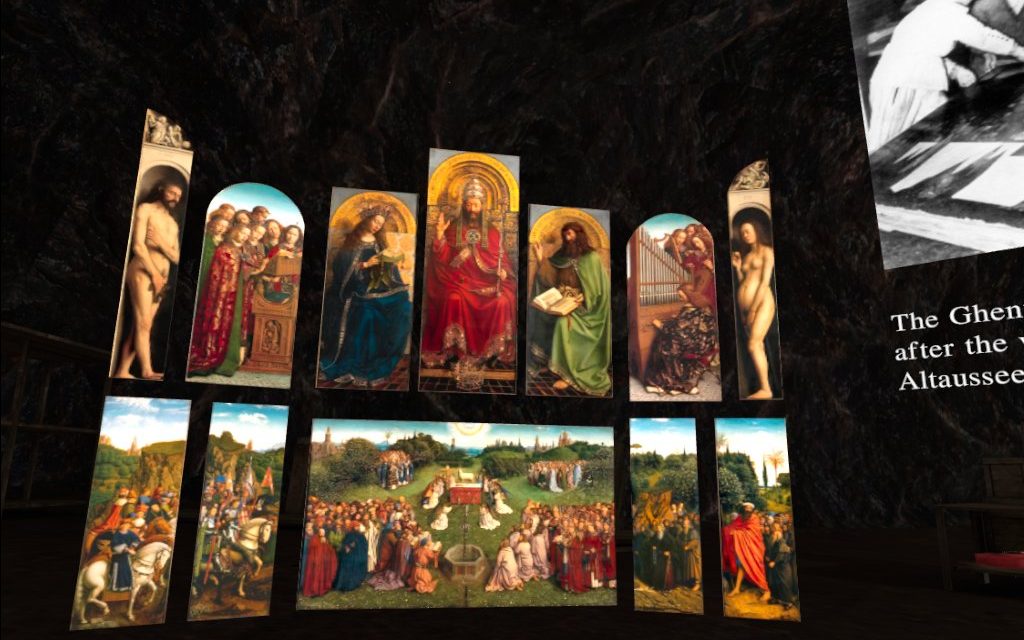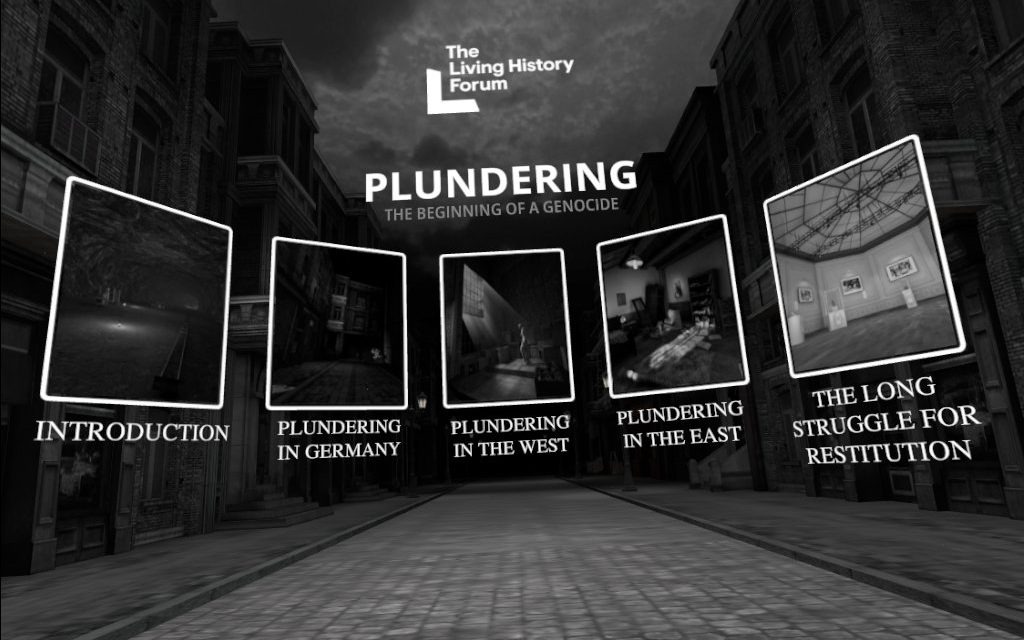
From 1933 to 1945 the German Nazis performed the largest looting of cultural objects and personal belongings in history. […] Special looting units were sent out to confiscate the most important and the most valuable art collections, libraries, and archives. […] The looting was a part of the Holocaust – A way to wipe out a people by depriving them of their history, culture, and humanity. Millions of items were never returned to their rightful owners after World War II.
From the product description
About the Experience
Plundering is a documentary experience where you can learn about the widespread Nazi looting of art, antiques, and books from across Europe during World War II. The Nazis stole world-class masterpieces along with other representative pieces to add to private collections and to fulfil Hitler’s dream of a museum glorifying his empire. Not surprisingly, he wanted no works by Jewish authors or artists so as to erase their many contributions to the world.

While there are other documentaries and movies, such as The Monuments Men, covering the subject of Nazi looting, Plundering brings you closer to the events by virtually taking you into a salt mine, an alley, and other spots to learn about the rationale, the process, and both the short-term and long-term effects of the operations. It truly is staggering seeing the enormity of the actions and their impacts.
Graphics and Sound
Throughout the experience, the graphics are good overall. Since this only runs on the Quest 2, there are pretty strict limitations on image and motion quality in order to perform well (photo quality means that freezing or stuttering are more likely). The developer hand-crafted the different scenes since the environments are only representative. The paintings are higher-quality scans and some of the sculptures and other items might have been photogrammetrically captured, although reduced to a manageable quality for the headset.

Information Content
Each location in the experience includes fully voiced narration with subtitles to make it easy to study the pieces while learning about them. While the narration unfolds, you’ll see a scale rendering of the painting or three-dimensional item. The 3D items rotate so you can see all views. Photos taken at the time of the looting appear and float in front of you. These all fit together to provide great context about the piece itself, such as the name, creator, and time period of creation, along with information about the Nazi looting actions.
Navigation and Interactivity
There are five locations you can visit in addition to the street scene that serves as “home.” You can choose the order that you visit the locations. Within each location, there is some general information, then a number of items you can select to activate their details. You can choose any order for activating the items as well.

Sadly, this is really the extent of interactivity in the experience as the app doesn’t support room-scale exploration. This is partly explainable since it keeps everything more focused on the individual items, considering that the environments are artist creations, not actual captured locations. What it lacks though is a way to examine objects more closely. When you activate an item across the room, it will zoom in closer to you for better clarity. This is nice, but it doesn’t allow you to get very close for a better look.
Not taking full advantage of VR
It’s nice to see a statue at full-size in front of you. It’s nicer to be able to walk around it. Even having it rotate isn’t the same as finding different angles to see it. Something that I don’t see much in virtual reality is the ability to truly interact with the items. The items floating in front of you is little better than a museum. In many museums, I can get pretty close to see the fine details. VR should be better than a museum!
I would suggest that apps like this allow the user to hold the item to examine it directly from all angles. I want to hold it up as close as possible, even being able to shrink and enlarge it. Sometimes it’s useful to see things at scale. Other times, it’s useful to hold it in your hand to grasp it in its entirety. I expect VR to allow me to interact with it in ways real life doesn’t allow.
Updates and Support
The developer has not released any updates or new content for this title yet nor have they announced any.
Summary
Plundering is a very well-done overview of one of the many tragic actions undertaken during World War II. Anyone interested in learning more about World War II history and especially Nazi looting would be advised to download it and take a look. Even though I was already aware of the plundering at a high-level, this provided a lot more context surrounding the actions along with details on the pieces themselves. There’s no better way to experience history than through the immersion of virtual reality (in my opinion!). Along with Anne Frank House, you can find some great opportunities to use VR to be better informed about that time period. Any other related titles I should look at? Sound off in the comments!
Pros
- Great content about Nazi plundered artwork
- Decent graphics
- Broad selection of items
Cons
- Unable to move around freely
- No interaction with items

